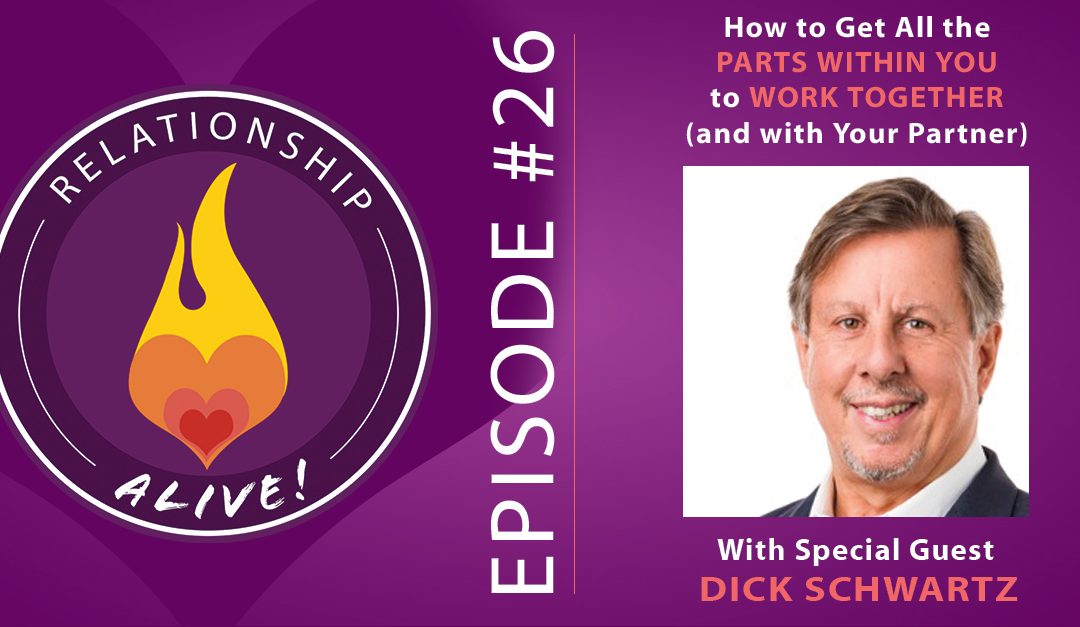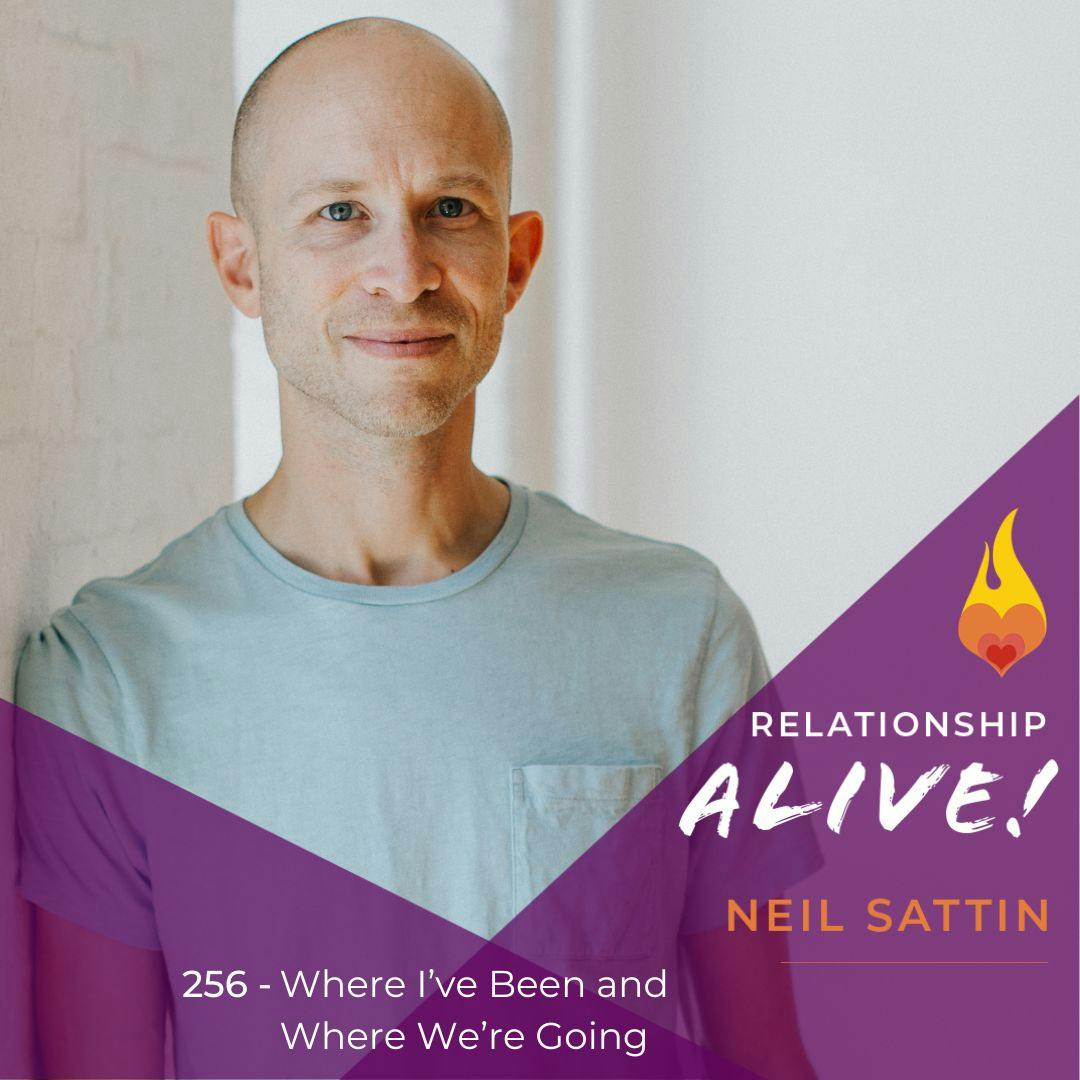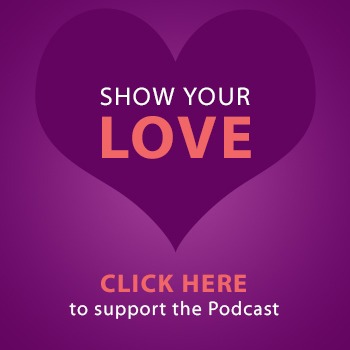Have you ever heard yourself saying “There’s a part of me that feels one way, and another part of me that feels another?” - or have you ever wondered why you might do things that seem counterproductive to what your actual intentions are? Do you have a mindfulness practice, and wonder how you can get more out of it - is it not quite transforming your life the way you thought it would? Or here’s another question: when you take a moment to get to the heart of what you want, or “need” - how do you know if it’s something healthy, or just a way of perpetuating something within you that really ought to be something that you heal and move past?
Today’s guest is going to help you answer those questions. And if you’re inclined to do the healing work, what he offers is a powerful path to get you there. His name is Richard Schwartz, also known as Dick - and he is the founding creator of the evidence-based therapeutic modality called “Internal Family Systems” - which offers an effective way to address both issues within yourself and issues within a relationship. We’ll explain how it all works, and how you can use it on your own, on today’s show. Dick is the author of the book “You Are The One That You’ve Been Waiting For, Bringing Courageous Love to Intimate Relationships” - and we’ll use that book to help guide our conversation about how to apply Internal Family Systems (IFS) to your relationship. We discuss how to identify and heal the various parts of yourself that may be leading your actions, your beliefs, and causing internal and interpersonal havoc, and how to reconnect with your Self in ways that result in lasting healing and promotes intimacy. You will learn how to speak for your parts, heal vulnerable and hurt parts, and increase Self leadership. I think you will find that this approach makes a lot of sense and that it is very workable!
In this episode, Dick Schwartz and I cover the following:
We all have parts. We all have parts inside, as if we are carrying around a family or a cohort of sub personalities. You’ll recognize this as soon as you tune into your speech- how common is it to say “part of me really doesn’t want to do that right now”, “another part of me does”, “part of me is frustrated this is happening”, or any other form of “part of me…”? This is the language we each naturally use to explain the phenomena of having multiple, mixed, and sometimes contradictory emotions/instincts/beliefs. But, we are also not ONLY our parts. This is a distinct premise of the Internal Family Systems approach. We each have a Self and all that is not the Self are parts. Parts are autonomous, they have projects, agendas, missions, and sometimes are so self-like that they fool even us.
An allegory to explain parts: A little boy is standing on the bank of a river watching the water flow by when all of a sudden the ground gives way, and he finds himself tumbling quickly downstream. He doesn’t know how to swim but at what seems like the last second he grabs onto a log floating beside him. He grabs on with all his might and hugs it until the water washes him safely onto a beach further downstream. The boy tries to step up to solid ground but it is difficult to walk with the heavy log. He cannot let go of the log, fearing he will not be able to survive without it, and yet he is stuck holding it.
This little boy has a part that will not let go of the log because it believes the boy may drown without it. When we have difficult, traumatic, and confusing experiences we immediately learn ways to adapt in order to survive. Parts are our system’s response to painful experiences in order to protect ourselves from being hurt/shamed/embarrassed/disappointed again, and they learn to protect at all costs, even when it seems that it is wreaking havoc in our lives. You may know some of your parts already- the one that always makes you late, the one that makes you perfectly on time for EVERYTHING, the one that starts to panic when he/she doesn’t call you back, the one that makes you eat more than you intended, the one that is constantly pointing out flaws in your partner, the one that is constantly criticizing how you look… we each carry parts upon parts, some more extreme than others. Whether you love some of your parts (the hardworker? the dedicated friend?) or are incredibly ashamed by other parts (the addict, the procrastinator), it is important to understand that all parts have good intentions. Even the most damaging and dangerous parts.
Learning more about your parts- Your anger, for example, may be like the little boy’s log. If you were to bring mindfulness and curiosity towards your anger (knowing that it has good intentions), focus in on it, and then were to ask the bundle of anger what it wants you to know about itself, you will likely get an answer. Often the answer will surprise you! Ask your anger what it is afraid would happen if it didn’t get angry so quickly. What you will learn is that it is likely protecting a young vulnerable part of yourself that it is afraid will not be able to survive without protection. You can ask the part how old it thinks you are. Often you will learn that your parts are stuck in the past, and that they are exhausted of their role. As we learn more about a part’s purpose we can learn what to do to help release it from its current role, and how to heal the original hurt. Most parts are not what they seem and will gladly change if they sense that it is safe to do so!
What is the Self? Not only does it turn out that we all have parts, but we also all have a Self! This is an internal omnipresent essence that cannot be damaged, and has all the resources that we need to heal ourselves. Some may call it an inner leader, an inner good parent, others may call it their spirit, their soul, their “I”, or simply “myself”. IFS defines the qualities of Self as the 8 C’s:
COMPASSION
CURIOSITY
CALMNESS
CREATIVITY
CONNECTEDNESS
CLARITY
CONFIDENCE
COURAGE
It can happen that our parts are so actively protecting us that it may feel like we can’t find our Self however as you learn to separate more and more from your extreme thoughts and emotions this more centered state emerges. It is helpful to recognize that it is always with us, and there are many ways to access this. Even just conjuring up these qualities helps to build Self energy. Many of you will know this process as mindfulness- the consciousness of witnessing ourselves in each moment from a compassionate place.
Self-leadership: The key towards healing is to build a Self to parts relationship in which your parts can begin to sense that there is a Self present. As protective parts begin to be acknowledged by the Self (bringing curiosity helps this tremendously), they are able to begin to trust more and step to the side which allows the Self to be even more present. A key question to ask in order to build the Self-to-part relationship is: How do you feel towards this part? The more self-led we are, the more healing can happen because we will be able to connect to the knowing that we actually do know how to take care of exiled parts.
Exiles- what they are and how they manifest in our lives and relationships:
By nature of growing up, we all come out of our childhoods and families with many exiles. Exiles are parts that in a painful moment took on a burden, such as the belief that “I am worthless”, “I am no good”, “I am not wanted”, “I am alone”. These vulnerable parts of ourselves are usually hidden, locked away, ‘exiled’ in our system by all of the other parts that are desperately trying to protect them. Sometimes some of us come to relationships in hopes that our partner will heal, match or redeem us, someone who will give us that special something that we did not get at an earlier and critical stage. This premise sets people up for relationships that may not work out because our partner cannot do our healing for us. It is as if your parts, in desperate want of survival, choose a partner instead of your Self choosing. Exile led relationships can lead to neediness, dependency, disappointment, and will likely run your partner away. Over time the parts that wanted to be taken care of become frustrated, they begin to criticize your partner in an effort to change them into the redeemer you were looking for, or your critical parts lead you to try to change yourself, and then you may develop parts that begin to create escapes through fantasizing, drugs, work, sex, etc.
Attachment theory taken inside- We are all hurt and we all have extreme protectors that screw up our relationships- and so, we each have a responsibility to our partners to work on ourselves. In order to move away from being in an exile-led relationship, it is important to learn to take care of your vulnerable parts. Instead of expecting or demanding your partner to be the attachment figure you never had, your Self must become the good attachment figure. In this way you become the one that you have been waiting for! Your partner then, can become a secondary support, a role that has a lot more vitality and sustainability!
Tor-Mentors- Although it may sound less romantic than ‘soulmates’, often our partners are our most prized ‘tor-mentors’- those people in our lives that help us learn how to heal by tormenting us! Our partners trigger our parts constantly, which causes large emotional reactions that become trailheads that if followed will lead you to some key exiled parts that may need to be saved from where they are stuck in the past. In this way our partners help us transform by shedding light on areas that can then be addressed between your Self and your parts.
Creating a Self-led relationship: Try introducing parts language into your relationship! Likely you will be amazed by the immediate impact on your communication. In order to get to the open hearted place of Self to Self interaction, it is important to learn to SPEAK FOR, rather than FROM your parts! Instead of “I hate it when you do that!”, say “I have a part that hates it when you do that thing”. Over time this will become something more like “When you did that thing it triggered an angry part of me that hates when you ignore me because it remembers when I was little and my father would do the same”, or something like that. In this way, not only are you taking responsibility for your reactions, you are bringing Self-energy (and all the qualities that come with that!) into the room. “I hate it when you do that” or worse, “I hate you” will cause your partner’s protectors (likely ones that experienced rejection or hatred) to inevitably react- thus creating a protector parts war in which one person’s protectors get triggered and react which alarms the other person’s exiles which put their protectors on alert. It is very difficult to get out of this cycle until you are willing to go beneath the protectors and see what it is they are reacting so strongly to.
Unburdening as a way to heal exiles and increase vitality in your relationship! Once your system begins to trust that your Self is truly present, a certain safety is created that allows for the protector parts to relax enough for you to access your own exiles. Often this process is best mediated with a therapist, as they can help act as ‘hope merchants’ and help you stay connected to Self so that you do not become overwhelmed as you interact with these most vulnerable parts of yourself. Once you have gained permission from your protectors you can access exiles directly and begin to find out what they need in order to release the extreme beliefs and emotions that they have been carrying for so long. Note: experience shows that 70% of most people’s exiles were ‘born’ before the age of 10. Once exiles are acknowledged, heard, and helped to release their burdens they spontaneously transform! In an effort to protect and survive, our parts take on roles and structures that often cut us off from our most vulnerable resources. The unburdening process reintegrates the original personalities of innocent parts which leads to a surge of vitality! By taking care of your exiles (instead of adapting to them all of the time), all of that child energy- the spontaneity, delight, playfulness, and creativity will flood back into your system, and into your relationship!
Dos and Don'ts of trying this at home: If you would like to explore your own parts, try the following:
Imagine your partner in a room by himself/herself and you are outside the room, looking in. Just notice the parts of you that come up as you focus on your partner. Choose to focus on the part that is most visible/energetic/extreme. Take your attention inside. Where do you find this feeling/sensation/thought in or around your body? Then notice how you feel towards it? If you feel anything that is not one of the 8 C’s then it is another part! Ask those parts to give some space and relax a bit. Keep identifying parts and asking them to step aside until you feel curious towards this target part. With curiosity and compassion it is safe to ask this part why it does what it does/feels what it feels/believes what it believes. Ask what it is afraid would happen if it did not do that thing. As you learn what it is protecting then you have a lot of options- you can talk to your partner about what you learned, you can thank that part for its service and remind it that it doesn’t always have to jump in in this way. If you ask it how old it thinks you are and it is way off, then help it see that you are actually older and not stuck in that same young place.
At this point the protective part has likely led you to a shadow sides of yourself, the basements and darker areas where we each store our exiles. Be careful not to rush towards exiles- if it becomes too scary or overwhelming , more extreme parts will come in to distract and may cause damage in their efforts! As you encounter exiled parts and painful memories it is suggested you work within the safe holdings of a therapist you trust.
Exploring parts with and without your partner: A lot of this work involves intensely inward awareness and can definitely be done on your own. Beware however that as you work with your parts and address underlying core memories and bruises you may change a lot! Just as your protective parts will restructure themselves in response to your unburdening, your relationship may restructure as well- likely for the better! Tthe more Self-led you are the more attractive you will be to your partner! As far as working this model together, you can definitely begin today by using parts language. Begin to identify parts (make the come as alive as you can- color, shape, name) and start speaking FOR your part. As you each begin to learn about your parts and what they are protecting, share this. Share your own Self-energy with your partner by being curious, with them, about their parts. Together you can build a culture of understanding that all parts, even the most disruptive ones, have a positive intention, and once you can gain glimpses of what is being protected, then empathy for each other and your parts will emerge. This in turn leads to resilient intimacy, that kind of intimacy that is created by diving deep and coming back out to celebrate your healings together.
Things to try immediately:
-Notice parts and bring curiosity towards your parts. Where do you sense this part in or around your body? it may be a feeling, thought, sensation, physical pain, voice, etc. What is this part afraid would happen if it did not do its job? Ask it! Ask it how old it thinks you are! Thank it for all it has done! Let it sense YOU now.
-Appreciate all of your parts and how they have been working to protect you for likely a long long time. Remember all parts are welcome and all parts have good intentions.
-Try speaking FOR your parts! You will be amazed at how immediately impactful this can be in your partnerships
-Find ways and take time to connect with your Self. you can invoke any of the 8 C’s at any point and this helps conjure more Self energy.
Resources
Learn more about Internal Family System from the Center for Self-Leadership
Read Schwartz’s Book- You are the One You’ve Been Waiting For
https://www.neilsattin.com/self Visit to download the show guide, or text “PASSION” to 33444 and follow the instructions to download the show guide to this episode with Richard Schwartz
Our Relationship Alive Community on Facebook
Amazing intro/outro music graciously provided courtesy of:
The Railsplitters - Check them Out!


